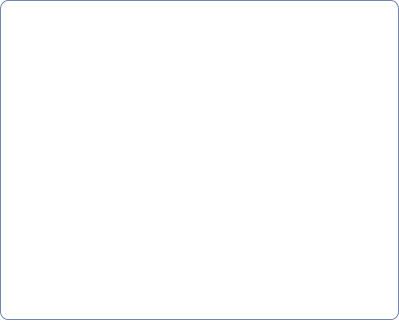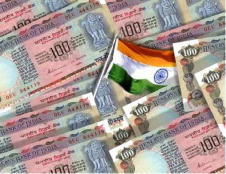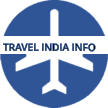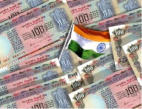Currency Exchange-India
On arrival at the airport in India, foreigners may exchange currency at the currency exchange booths located inside the airport. These booths are usually available before you leave the customs area. If you walk out of the airport you may not be allowed back in to exchange foreign currency. Some points to remember when exchanging currency in India. • Always exchange foreign currency at authorized dealers such as American express or Thomas cook outlets. Most banks also are authorized to deal in foreign exchange. • Insist on a currency exchange receipt. This proves the source of your funds in India. • Currency exchange receipts clearly show the amount of foreign currency exchanged for Indian currency and the rate of exchange you were given. Please be aware that fake Indian currency notes like Rupee 500 notes are said to be circulating in India. The use of currency notes such as Rupees 500 and Rupees 1000 given out usually during currency exchange frequently are being taken out of circulation. See the Indian currency alert on the right side of this page. • Do not fall victim to people trying to entice you by saying they will give you a better exchange rate than what the banks may offer you. If you save your currency exchange receipt you will be able to reconvert your left over Indian currency back to foreign currency at the airport where you fly out from. When buying rail tickets etc that are available on a priority basis for tourists only. If you have proof of currency exchange receipt you will be allowed to pay for the tickets in Indian rupees. Other wise you will have to pay in foreign currency only. Do not purchase foreign currency form local residents. Buying foreign currency from unauthorized places is also illegal. Fake foreign currency is not uncommon in tourist areas. Many banks and money exchange dealers offer a slight premium for traveler’s cheques than they do for cash. However, during my recent visit to India in October 2014, I found that banks were offering more for currency than they were for travelers cheques. Even Thomas Cook outlet was offering a lower rate for Traveler Cheques. Here is a link for more information on currency exchange regulation for India: http://nriinformation.com/articles2/foreign_exchange.htmHigher Rates of Exchange from Private Dealers (Update)
During my recent visit to India I found that rates offered by banks were much lower than what most private money exchangers were offering. In fact private money exchangers who are now legally allowed to conduct currency exchange activities and provide receipts were offering a slightly higher rate of exchange than banks in India. One such dealer offered me Rupees two more per US dollar exchanged if I did not ask for a receipt. He claimed they have to pay tax if they provide a receipt. However, the idea of exchange money in such circumstances is a risk that should be best avoided. With fake currency reports these days, it is always a good idea to have proof where you got your money from! AMERICAN EXPRESS TRAVELER CHEQUES: Strangely enough the Amex bank located in Cannaught Place refused to cash American Express travelers cheques. I had purchased these American Express Traveler Cheques in Seattle. When I inquired why they would not cash them as they were issued by their own company, I was told that Amex bank in India will only cash travelers cheques if you already have an account at their bank. So how and why would tourists visiting India from abroad have local bank accounts in India? Foreign exchange rules in India for Tourists, Businessmen, Students and Immigrants . . . Read Article >>

Indian Currency Notes Alert
Indian Rupee currency notes printed printed before 2005
will be no longer be accepted after January 1, 2015.
Those who have such currency notes should exchange
them at par at Indian banks as soon as possible.
Currency notes issued before 2005 do not have the year
of printing on the reverse side. In notes issued after
2005, the year of printing is visible at the bottom of the
reverse side.
Tourists should ensure they are not accepting any Indian
currency notes that do not have the year of printing
visible on the reverse side of the currency.


Travel India Info
Complete Touring Guide for exploring India
We are not associated with any tour or travel business


© Copyright TravelIndiaInfo.net - All rights reserved
Currency Exchange-India
On arrival at the airport in India, foreigners may exchange currency at the currency exchange booths located inside the airport. These booths are usually available before you leave the customs area. If you walk out of the airport you may not be allowed back in to exchange foreign currency. Some points to remember when exchanging currency in India. • Always exchange foreign currency at authorized dealers such as American express or Thomas cook outlets. Most banks also are authorized to deal in foreign exchange. • Insist on a currency exchange receipt. This proves the source of your funds in India. • Currency exchange receipts clearly show the amount of foreign currency exchanged for Indian currency and the rate of exchange you were given. Please be aware that fake Indian currency notes like Rupee 500 notes are said to be circulating in India. The use of currency notes such as Rupees 500 and Rupees 1000 given out usually during currency exchange frequently are being taken out of circulation. See the Indian currency alert on the right side of this page. • Do not fall victim to people trying to entice you by saying they will give you a better exchange rate than what the banks may offer you. If you save your currency exchange receipt you will be able to reconvert your left over Indian currency back to foreign currency at the airport where you fly out from. When buying rail tickets etc that are available on a priority basis for tourists only. If you have proof of currency exchange receipt you will be allowed to pay for the tickets in Indian rupees. Other wise you will have to pay in foreign currency only. Do not purchase foreign currency form local residents. Buying foreign currency from unauthorized places is also illegal. Fake foreign currency is not uncommon in tourist areas. Many banks and money exchange dealers offer a slight premium for traveler’s cheques than they do for cash. However, during my recent visit to India in October 2014, I found that banks were offering more for currency than they were for travelers cheques. Even Thomas Cook outlet was offering a lower rate for Traveler Cheques. Here is a link for more information on currency exchange regulation for India: http://nriinformation.com/articles2/foreign_exchange. htmHigher Rates of Exchange from
Private Dealers (Update)
During my recent visit to India I found that rates offered by banks were much lower than what most private money exchangers were offering. In fact private money exchangers who are now legally allowed to conduct currency exchange activities and provide receipts were offering a slightly higher rate of exchange than banks in India. One such dealer offered me Rupees two more per US dollar exchanged if I did not ask for a receipt. He claimed they have to pay tax if they provide a receipt. However, the idea of exchange money in such circumstances is a risk that should be best avoided. With fake currency reports these days, it is always a good idea to have proof where you got your money from! AMERICAN EXPRESS TRAVELER CHEQUES: Strangely enough the Amex bank located in Cannaught Place refused to cash American Express travelers cheques. I had purchased these American Express Traveler Cheques in Seattle. When I inquired why they would not cash them as they were issued by their own company, I was told that Amex bank in India will only cash travelers cheques if you already have an account at their bank. So how and why would tourists visiting India from abroad have local bank accounts in India? Foreign exchange rules in India for Tourists, Businessmen, Students and Immigrants . . . Read Article >>



© Copyright TravelIndiaInfo.net - All rights reserved

























